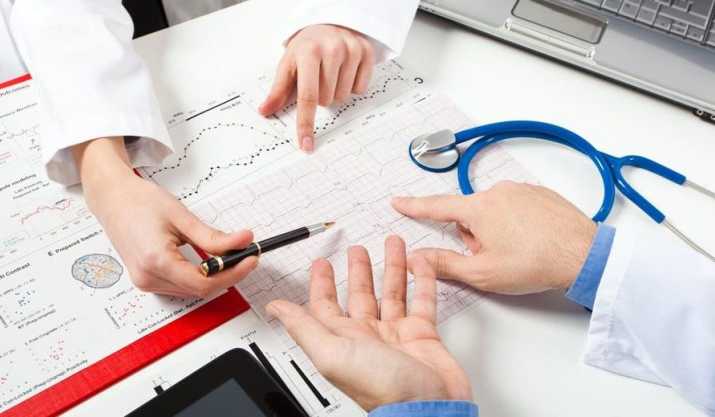Tradução médica: “a palavra certa” pode salvar uma vida

Quando se fala em medicina, um único erro em uma palavra pode ter consequências graves. Uma bula de medicamento mal traduzida ou um diagnóstico transmitido de forma imprecisa podem colocar em risco a saúde – e, em casos extremos, a vida – de um paciente. Por isso, a tradução médica não é apenas um serviço linguístico, mas uma área em que cada palavra carrega um peso de responsabilidade profissional.
O que torna a tradução médica especial
O tradutor médico trabalha na fronteira entre dois mundos: o da linguagem e o da ciência. Ele precisa dominar não só a gramática, mas também a anatomia, a farmacologia e a terminologia técnica. Diferentemente de textos literários ou publicitários, onde há espaço para variações ou estilos pessoais, na tradução médica o objetivo é único: a exatidão absoluta. Um número mal interpretado, uma unidade de medida trocada ou um termo mal escolhido podem alterar completamente o sentido do texto.
Pense, por exemplo, na tradução do manual de um ventilador pulmonar. O original diz: “Adjust the pressure to 20 cm H₂O”. Se o tradutor trocar a unidade de medida ou interpretar mal a abreviação, o resultado poderá pôr em perigo o paciente. Em medicina não há “aproximações”: há apenas o certo e o errado.
As dificuldades da tradução médica
Os desafios começam cedo, com a terminologia. Muitos termos se parecem, mas têm significados completamente diferentes. “Ileum” indica o íleo, parte do intestino delgado, enquanto “ilium” refere-se ao osso do quadril. Uma única letra muda totalmente o conceito anatômico.
Outro obstáculo são as abreviações, abundantes em textos médicos: BP, HR, ECG, CT, MRI e tantas outras. O problema é que uma mesma sigla pode designar coisas distintas de acordo com o contexto. “BP” pode significar “blood pressure” (pressão arterial) em um documento e “biopsy” (biópsia) em outro. O tradutor profissional deve sempre confirmar o significado real conforme o contexto.
As diferenças entre os sistemas de saúde de cada país representam uma dificuldade adicional. Os modelos de relatórios clínicos, a classificação de doenças, as formas de financiamento e até as designações oficiais das instituições variam muito. Por isso, a tradução médica exige não só precisão linguística, mas também adaptação cultural — uma verdadeira “localização” do texto.
Nada de suposições
A tradução profissional na área médica exige tanto conhecimento quanto cautela. Quando o tradutor tem dúvidas, ele não arrisca — ele confirma. Essa é a regra de ouro. Não se espera que o tradutor seja médico, mas ele deve compreender a estrutura dos textos técnicos e saber usar fontes confiáveis, como PubMed, Medline, a Terminologia da OMS ou as normas ISO.
Às vezes o texto original contém erros ou trechos ambíguos. Nesses casos, o tradutor não deve “melhorar” o texto por conta própria, mas avisar o cliente ou o autor. O tradutor torna-se, assim, um verdadeiro mediador entre especialistas que falam línguas diferentes — e é exatamente aí que se reconhece o profissionalismo.
Precisão e clareza: o equilíbrio essencial
Muitas pessoas imaginam que os textos médicos são sempre frios e cheios de termos difíceis. No entanto, um bom tradutor consegue torná-los compreensíveis quando o público o exige. Em folhetos ou instruções voltadas aos pacientes, por exemplo, o termo técnico pode vir acompanhado de uma explicação simples: “hiperglicemia (nível elevado de açúcar no sangue)”. Nesses casos, a precisão anda de mãos dadas com a empatia.
Ao contrário dos artigos científicos voltados para especialistas, os documentos destinados aos pacientes precisam ser claros e acessíveis. O tradutor, aqui, vai além de um mero intermediário — ele garante o entendimento entre médico e paciente. É também uma forma de localização, centrada no ser humano em vez do mercado.
Ética profissional e confidencialidade
A tradução médica é uma atividade que requer sigilo absoluto. O tradutor lida com dados sensíveis: históricos médicos, resultados de exames, informações pessoais. Por isso, empresas especializadas seguem rigorosamente as normas de confidencialidade e firmam acordos de não divulgação.
A terminologia médica também muda constantemente. Novos tratamentos, medicamentos e tecnologias surgem todos os anos. Um tradutor precisa manter-se atualizado para evitar o uso de termos ultrapassados. Por exemplo, o termo “adult-onset diabetes” foi substituído por “type 2 diabetes”. A atualização contínua é parte do trabalho.
Exemplos da prática profissional
Muitos casos interessantes surgem no dia a dia da tradução médica. Em um documento para uma clínica de transplantes, o tradutor em formação traduziu o termo “recipient” como “destinatário”. Só depois percebeu-se que o sentido correto era “receptor” – o paciente que recebe o órgão transplantado. Um erro simples de contexto, mas com grande impacto médico.
Outro caso envolveu um relatório de ensaio clínico que descrevia a “tolerability” de um medicamento. Traduzir literalmente como “tolerância” não faria sentido em português. O termo correto é “tolerabilidade”. São esses detalhes que diferenciam uma tradução profissional de uma versão amadora ou automática.
Conselhos para tradutores iniciantes
Primeiro: nunca tenha medo de perguntar. Até os profissionais mais experientes encontram termos desconhecidos. Segundo: construa seu próprio glossário médico. Essa ferramenta pessoal facilita o trabalho e garante consistência terminológica. Terceiro: mantenha-se atualizado participando de fóruns profissionais, lendo revistas médicas e acompanhando bases terminológicas. A linguagem da medicina está em constante evolução.
Conclusão
A tradução médica é um campo em que o valor de uma palavra pode equivaler à própria vida. Não há espaço para improvisos: a precisão é uma questão ética. Um bom tradutor não é apenas bilíngue; ele reúne domínio linguístico, conhecimento especializado e senso de responsabilidade. Para o cliente, isso representa segurança; para o tradutor, um desafio diário de atenção e rigor.
A tradução médica profissional não é um luxo, é uma necessidade. Às vezes, a palavra certa pode, literalmente, salvar uma vida.

